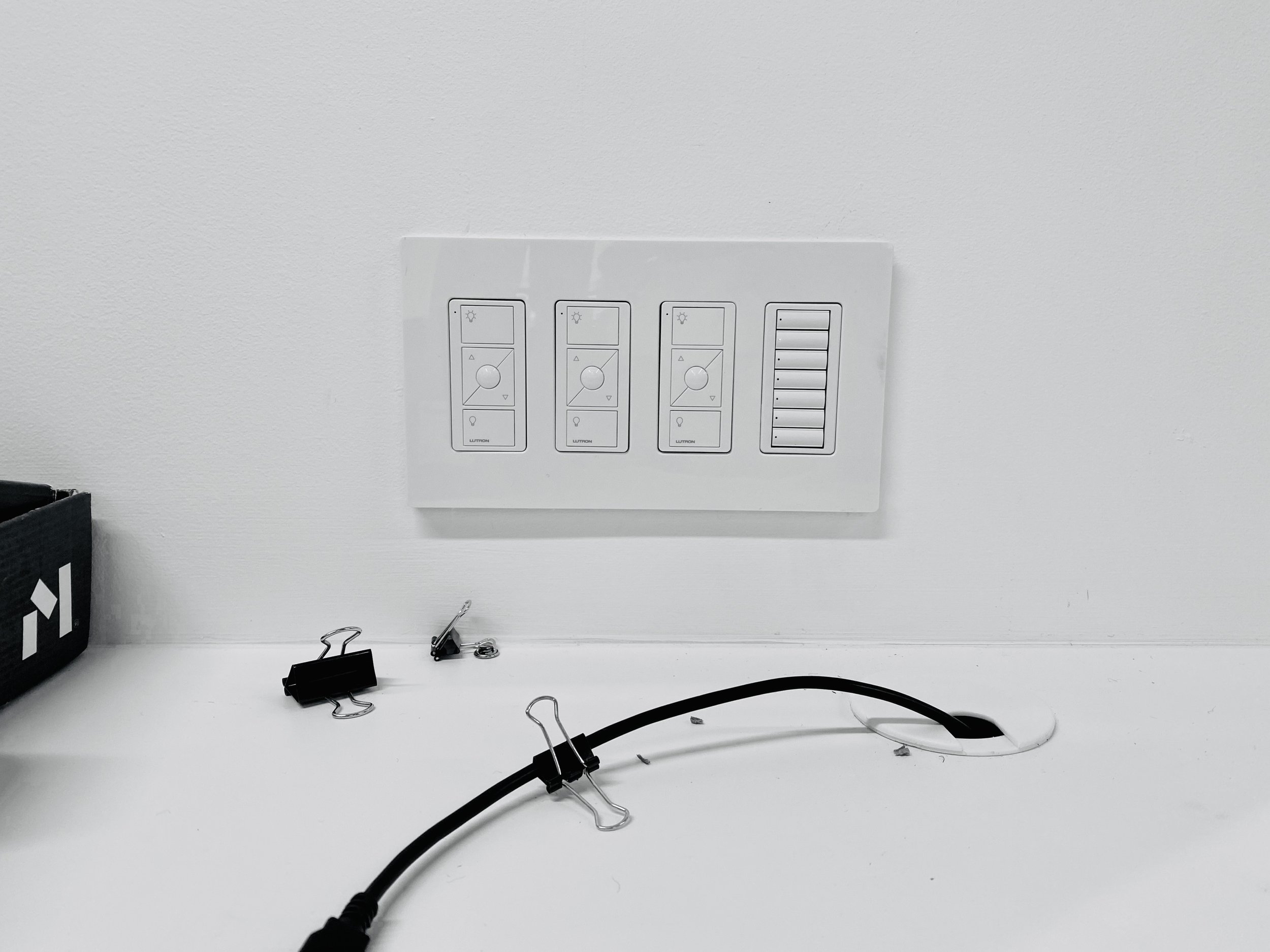Importance of Lighting Controls in the Workplace
Back before the age of LEDs and modern-day lighting control technology, offices were always lit very bright with harsh fluorescent lamps. Today, better lighting control options and lighting fixture technology allows for a more tailored, robust lighting solution. Lighting controls play a key role in contemporary lighting design, especially that of workspaces where humans spend significant portions of their lives. Controls can adapt to suit the function, allow for intelligent lighting solutions while meeting code requirements for energy conservation, and could benefit overall productivity and quality of environment for end-users.
Architectural lighting controls can allow for adaptable lighting and thus have a significant impact on the use of a workspace. Through effectively utilizing lighting control systems, we can create various lighting scenes customized for specific functions. For example, a conference room may have several functions including internal meetings, video conferencing meetings, client presentations, and a after-work, happy-hour congregation spot. The scenes programmed for this space would adjust the lighting according to the task; higher vertical illuminance levels for video conferencing and lower, quieter lighting levels for happy hours. In areas like open offices, we can utilize controls to turn off lighting in areas not currently occupied and automatically dim areas receiving adequate light from exterior fenestrations. Digitally addressable control systems allow for rezoning of fixtures without any rewiring which is ideal for office spaces with high tenant turnover rates.
In addition to functional adaptability, architectural lighting control systems allow for lighting designs to meet energy conservation code requirements. As energy becomes an ever-growing limited resource, codes are continuously trying to reduce total energy usage in buildings. As such, lighting is required to have automatic light reduction control, receptacles are required to be controlled via occupancy sensors, etc. Lighting control systems are constantly changing to keep up with code requirement updates. Designing lighting systems with codes in mind, allow for a final lighting package that seamlessly addresses all code requirements while functioning per the users’ needs.
Lighting control systems can also help benefit the end users by increasing the quality of the environment and may help productivity. Sitting under high output fluorescent lighting all day at work can increase fatigue in users. Dynamic lighting control – whether through user-controlled dimming or tunable white lighting – can alleviate this fatigue and studies indicate may increase energy and aid focus. Tunable white lighting, or lighting that changes color temperature to mimic daylight, has been found to have a significant impact on users’ overall experience and productivity in the space. Also, lighting controls paired with task lighting at user workstations can further aid productivity by allowing a lower overhead light level and the ability to increase personal lighting at the work surface for specific tasks.
Lighting controls in the workplace are an important and necessary design item. Effectively designed lighting control systems can allow for lighting design adaptability, code and energy conservation compliance, and aid in improved environment for users.


